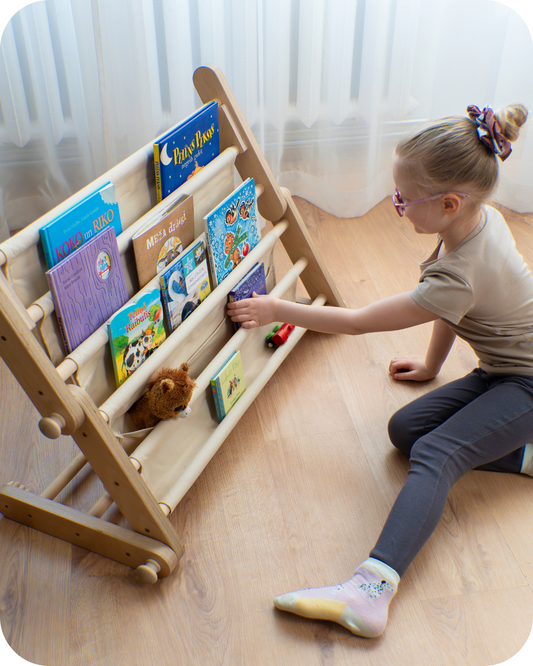Creating a safe, stable, and nurturing environment for children is essential for their social, emotional, and cognitive development. It is important to provide children with a safe and secure home environment that fosters healthy relationships with family members, friends, and the community.
Safe environment
Creating a safe environment for children begins with setting clear boundaries and expectations. It is important to clearly communicate expectations for behavior and to be consistent in enforcing those expectations.

Parents should also work to create an environment that is free from anger and conflict. This includes avoiding yelling and other forms of aggressive communication.
Setting healthy boundaries for a toddler
Setting boundaries for toddlers can be a challenge, but it is an essential part of healthy development. Here are some tips to help you set healthy boundaries:
- Explain expectations clearly and calmly: Explain rules in simple language and make sure your child understands them.
- Stick to your decisions: Consistency is key when it comes to setting boundaries.
- Offer rewards for good behaviour: Rewards can be a great way to encourage positive behaviour.
- Stay firm yet loving: Make sure your child knows you love them, but that you are also in charge.
- Provide consequences for unacceptable behaviour: Consequences should be age-appropriate and consistent.
- Model the behaviour you want to see: Show your child how to behave in the way you want them to.
- Allow your child to make mistakes: Instead of punishing your child for mistakes, use them as a learning opportunity.
- Set a good example: If you want your child to treat others with respect, make sure you do the same.
By following these steps and being consistent, you can help your toddler learn to respect and understand boundaries.
Stable environment
Creating a stable environment for children is also important. It is important to provide children with a consistent routine and expectations for behavior. This helps children to feel secure and builds trust in the family structure. Additionally, it is important to provide children with positive reinforcement and affirmation.

Affirmation helps children to feel valued and builds their self-esteem.
How to provide a consistent routine for a toddler
Providing a consistent routine for your toddler is an important part of helping them to feel secure and settled. Here are some steps to help you create a consistent routine for your toddler:
- Establish a predictable bedtime routine: This should include things like bath time, brushing teeth, story time, and cuddles. Doing the same thing every night will help your toddler know what to expect and will make it easier for them to settle down for bed.
- Create a mealtime routine: Having regular mealtimes helps toddlers learn to self-regulate their hunger and teaches them healthy habits. Serving meals and snacks at predictable times throughout the day also helps establish a routine.
- Establish a regular nap schedule: All toddlers need regular naps. Depending on age, somewhere between one and three naps a day is ideal. Naps should be at the same time every day and last roughly the same length of time.
- Include regular playtime: Playing is essential to a toddler's development, so make sure to build in regular playtime throughout the day. This could include indoor games, outdoor play, trips to the park, or other activities.
- Include time for chores: Even toddlers can do age-appropriate chores. Setting aside time every day to do chores can help your toddler learn responsibility and also become part of their daily routine.
Keep in mind that toddlers thrive on routine, but also need flexibility. It’s important to be consistent in your expectations, but also allow for some flexibility in the schedule.
Nurturing environment
Finally, creating a nurturing environment for children is essential. It is important to provide love, support, and nurture in a child’s life. This includes providing emotional support, spending quality time together, and encouraging children to express their feelings.

It is important to provide a safe space for children to explore their interests and develop their skills.
Practical steps on how to create a safe home environment
Creating a child safe environment at home is important for your child's safety and wellbeing. Here are a few tips to help ensure their safety:
- Install safety gates at the top and bottom of stairs, and use door knob covers to prevent children from accessing hazardous or off-limit areas.
- Secure all items that could fall and cause injury, such as shelves and bookcases, to the wall.
- Place hazardous objects, such as knives and other sharp items, out of reach.
- Install window guards to prevent falls from windows.
- Keep all hazardous chemicals and medicines in a locked cabinet and away from children.
- Set up a safe play area.
- Regularly check for potential hazards, such as exposed electrical outlets, frayed cords, or broken toys.
- Teach children about the importance of safety and the dangers of certain items.
- Ensure smoke and carbon monoxide detectors are installed and functioning properly.
- Have a family plan for emergencies, such as fires and natural disasters.
Following these guidelines will help create a safe environment for your child to enjoy.
Conclusion
Creating a safe and open home environment for children is an important responsibility for parents. It involves setting clear expectations, creating consistent routines, providing a warm and nurturing environment, and encouraging open communication.
To ensure a safe environment, parents should make sure to check for potential hazards in the home, such as potential fire risks, and establish boundaries and rules that are age appropriate.
To create an open environment, parents should listen to their children's feelings and concerns, be open to discussing difficult topics, and make sure to provide a safe and open forum for kids to ask questions and express themselves.
It's also important to provide kids with the opportunity to take part in activities and hobbies that interest them, and to provide a supportive environment for them to explore their interests.






